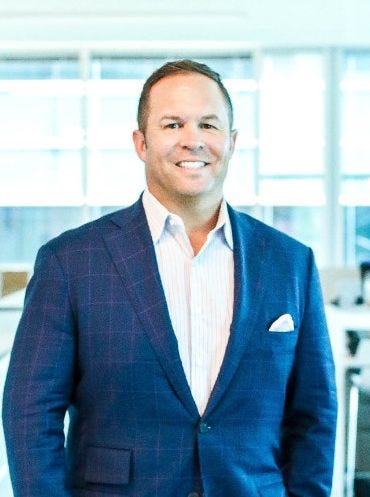Are Partners Actually Using Highly Touted Tools from Their TSDs?
Sixty-eight percent of technology advisors told Channel Futures they rarely or never use TSD pre-sale tools in customer engagements.

How often are partners using digital sales enablement tools and platforms from their tech services distributors (TSDs)? It depends on how you ask the question.
TSDs form a bridge between suppliers that provide as-a-service technologies and the technology advisors who sell to end users. However, TSDs have pushed back on the label of an intermediary, often highlighting what they do to help partners sell in a more consultative, efficient and professionalized manner. TSDs are hard at work building and expanding digital platforms that technology advisors can use to run customer discovery, vet potential suppliers and answer questions from prospective clients.
Many channel partners know of Avant’s Pathfinder app, which has seen numerous iterations over the years, and Telarus’ SolutionVue suite entered the scene last year with a series of new modules. With those products gaining attention in the marketplace, Channel Futures is examining the role they play in the everyday life of partners.
That conversation kicks off with a little bit of data.
The latest Q2 Channel Futures Partner Market Outlook survey asked technology advisors how often they leverage solutions such as Pathfinder and SolutionVue. Out of a small sample size of 34 respondents, 15% of partners said they use pre-sales tools in all or almost all customer engagements. Another 18% said they use them all or almost all of the time. But 24% said they rarely use them, and another 44% said they never use them.
How often do you use pre-sales tools provided by TSDs – such as Avant’s Pathfinder and Telarus’ SolutionVue – in customer engagements? |
All or almost all customer engagements |
At least half of my customer engagements |
Rarely any customer engagements |
I never use these tools |
Respondent Count |
However, there’s world of context behind these responses, and multiple partners and TSD executives weighed in on the nuances. Perhaps most importantly, the conversations with various stakeholders show that partners differ from how they view these TSD platforms, depending on their technological expertise, the customer segments they serve, their existing level of business with different TSDs, and the time they have in the day to learn new systems. And interviews with product leaders at Avant and Telarus shows how these companies uniquely position their sales enablement tools and platforms to partners and end users.
High or Low?
For many people reading those numbers, it came as a surprise to see 68% of technology advisors say they don’t use these products.
“As someone who uses their serviceability tools for almost every new customer site, I’m shocked. How else do people find out which internet providers are in any given building?” Adaptiv Advisors partner Ashley Rowland said.

Adaptiv Advisors’ Ashley Rowland
TeamKC Telecom owner Cynthia Ferrell registered similar surprise at the number.
“I use the heck out of my Intelisys tools. I have Compass, CableFinder and others open all day,” Ferrell told Channel Futures.

TeamKC Telecom’s Cynthia Ferrell
Procure IT managing partner Randy Jeter said that although the numbers appear low, they actually aren’t. And that’s because 40% of buyers already know the vendors and offerings they’re looking for, Jeter said.
“… they’re asking partners to source with a focus on creating a competitive bidding situation to get the best pricing and contractual terms. These buyers have done their research but don’t want to manage the process and head it up. This is a value-add to the buyer as most agents don’t charge a fee. About 15-20% are …
… small businesses with basic needs, which offer limited pricing adjustments off market rates,” said Jeter who said, pre- and post-sales tools could be applicable in the remaining 40-45% of opportunities.

Procure IT’s Randy Jeter
For Michael Brown, Telarus’ senior vice president of technology, those numbers didn’t come as a surprise. On one hand, the question specifically calls out Pathfinder and SolutionVue, but TSDs possess many other items that fit the bill of a “pre-sales tool.” For example, Cablefinder integrates its serviceability tool within various TSD. And many telecom-focused partners tell Channel Futures that they use these embedded connectivity lookup tools on a daily basis.

Telarus’ Michael Brown
Brown pointed to a few reasons why partners might not use SolutionVue. On one hand, they may simply not know about it. In other cases, they are looking to leverage it in cases of a qualified customer opportunity. Perhaps most importantly, the Quick Solutions Assessments (QSA) focus on helping partners adopt technology portfolios they don’t normally sell, like cloud and cybersecurity. There’s bound to be a smaller fraction of partners that are making that technology pivot in the first place, said Brown.
“We’re really trying to elevate our technology advisors to allow them to sell into places where they may or may not be comfortable selling,” Brown told Channel Futures. “You’ve got to overcome their discomfort with it and make sure that we can do everything we can to help them be successful, and then they have to be expanding the solutions that they’re selling.”
Avant Survey Says Otherwise
However, Chicago-based Avant offered data suggesting a much higher platform adoption. Vice president of product Jake Schuman said Avant recently surveyed approximately 500 partners about how often they use Pathfinder. Forty percent of them said they use Pathfinder all or most of the time. Another 31% said they used it occasionally but more than half of the time, according to Schuman. Moreover, 47% said they often use Pathfinder in front of end customers.

Avant’s’s Jake Schuman
That data proves directly contradicts the narrative that partners aren’t using these solutions, Schuman said.
“Those are the analytics that we capture and see, and then that justifies further investment on our end to go double down on investments and continue to drive innovation into all those trusted advisors’ hands,” Schuman told Channel Futures.
For Virginia-based technology advisor Kairos Data Communications, tools from distributors such as Avant and Intelisys comprise part of daily life.

Kairos Data Communications’ MaryTom Hofer
“Our sales team uses TSD tools every day for qualifying connectivity and comparing UCaaS/CCaaS providers down to features and functionality requirements from the customer, Kairos director of operations MaryTom Hofer said. She added that Kairos uses TSD tools in its operations, for training, certifications and updating customer data.
“Some TSD tools are more operations-friendly than others, but we’ll take what we can get for now. There are so many self-help options — you just have to get in there and click around,” Hofer told Channel Futures.
What Do You Mean by ‘Tools?’
Channel Futures’ survey framed the question around “pre-sales tools.”
But Avant chief innovation officer Chris Werpy said Avant avoids terms like “tools” to describe Pathfinder. Similarly, CEO Ian Kieninger has described Pathfinder as an “anti-portal.”
“There’s this concept of tools, then there’s this concept of platforms. And then there’s this higher concept of sales enablement,” Werpy told Channel Futures. “It’s easy to … look at tools in a very specific light and say, ‘I need this.’ But tools are only as good as that point in time if they’re built [to be] standalone.”

Avant’s Chris Werpy
And part of the problem with referring to these solutions as tools is the danger of …
… getting stuck in “point solutions” that stack up endlessly, Werpy said.
“Buying something standalone is what’s caused problems in enterprises — which is the shadow IT. Every group just buys something to fix a specific need, as opposed to taking it up a layer to the platform and the sales enablement process. How do I bring something and make it an ingrained part of my motion in my business to help grow that business?” he said.
And the Avant team says that process is setting its partners apart. Avant president Drew Lydecker said the advisors who use Pathfinder the most drive more than 10 times more revenue than their peers. And for Lydecker and co-founder Ian Kieninger, the platform fits into Avant’s vision of moving its advisor partners up-market into larger customer accounts.

Avant Communications’ Drew Lydecker
“All trusted advisors are getting sophisticated overnight. More sophistication is needed because they’re going after the large enterprise customer. The large enterprise essentially is requiring that. So being able to showcase intellectual property, being able to showcase trends, being able to be on the spot when it comes to knowledge around the ever-changing industry is … our goal,” Lydecker said.
One partner remarked to Channel Futures that they will use Pathfinder when they’re engaging with enterprise clients that aren’t familiar with their brand. They white-label Pathfinder as their own resource, using it in front of the customer during meetings.
North Atlantic Consultants president Michael Agri said Pathfinder 2.0 was built as a client-facing platform.

North Atlantic Consultants’ Michael Agri
“All you need to do is click the ‘Customer Facing’ toggle button at the top, and it removes everything that you wouldn’t want a client to see. As a TA, we can show this off as our own software platform, and our intellectual property, which increases credibility with the client,” Agri told Channel Futures.
Other partners have said tools like that have come in handy when they need to make their firms appear larger, as they compete against Accenture and Deloitte for credibility.
And it’s not just the big consultancies. Lydecker said Avant wants to outshine analyst firms like Gartner, Forrester and IDC that customers often turn to for market research. Partners can feel more confident if they know they possess data that comes from their own intellectual property, Lydecker said.
“I believe that the enterprise market is requiring unique IP and toolsets to help become a time multiplier in this market to be able to keep pace with the change that’s happening. That’s our whole unequivocal goal,” he said.
Finding the Fits
Brown said while Telarus is monitoring partner usage of the SolutionVue suite and its larger set of pre-sales tools, the company isn’t judging its success based on how many partners use it. Some partners won’t need to leverage particular modules from SolutionVue, Brown said.
“If you try to think about the technology advisor community as homogenous, you’re always going to fail in expectations for usage of tools,” he said. “Because if they have a contact center practice and have been selling contact center as [their] primary business for years, they really don’t need our [contact center] tool set to be successful. Our value proposition to those type of technology advisor owners has to be different than these pre-sales tools. These tools are really targeted at a small percentage of our overall partner base.”
That lines up with what VocalPoint Consulting president Derek Roush reports from his own firm. VocalPoint specializes in contact center, cloud computing and UCaaS, and that technology focus dictates the sorts of TSD tools the company uses. He said VocalPoint will tap Intelisys and Avant platforms for information about certain cybersecurity providers, but generally doesn’t use the platforms for telecom.
“We’re a little different in the sense that we sell very little traditional telco or circuits as a one-off. So we rarely use CableFinder or Fiber Finder apps. When we do sell circuits it’s usually part of a multilocation deal where we let the aggregator figure out serviceability,” Roush said.
However, VocalPoint leverages marketing brochures from Intelisys that it white-labels as its own.

VocalPoint’s Derek Roush
“We don’t use co-branded materials with vendor logos, but we’ll use general technology focused brochures and white papers. We also use Intelisys and Avant to get vendor information at times, especially if we’re looking for something like DLP or a regional SOC,” Roush told Channel Futures.
Brown added that Telarus’ success depends on the success of its partners. And the company needs to prove that it is …
… adding to that success on each sale, Brown said.
“We really feel like we have to earn this deal by deal. That’s … the core of who we are,” he said. “There is never an expectation that we’ll just automatically get the next deal because we have the previous one.”
The Future of Sales Enablement Tools
The TSDs – and not just Avant and Telarus – will continue to make updates to their digital platforms in 2023.

Omdia’s Devan Adams
Devan Adams, senior principal analyst of channel for Channel Futures sister company Omdia, encouraged TSDs to listen to the partners.
“TSDs need to focus on providing effective tools that partners value, and one way to do so is by collecting feedback from them to understand why the tools aren’t useful. In doing so they will find out if the lack of usage is due to, poor (non-intuitive) design, insufficient training, lack of support, system incompatibility, etc.,” he said.
There’s also the possibility of offering more of a carrot to the technology advisors.
“Additionally, if TSDs want to avoid pre-sales tools from collecting dust, they should consider increasing their incentives to partners and set up collaboration platforms where partners can share best practices and help each other use the tools to improve customer engagements,” Adams said.

JS Group’s Janet Schijns
JS Group CEO Janet Schijns said TSDs offer a “plethora” of pre-sales tools. But if partners aren’t using them, that could be cause for a re-evaluation.
“This stark statistic signals a potential gap to be solved between the tools being provided and their actual practical utility in the day-to-day operations of partners … It begs the TSDs to continue to rethink their strategies as they have in the past, and continually asking not just ‘are we providing enough?,’ but more importantly, ‘are we providing what’s now needed in the market?” Schijns said.
Brown encouraged partners to bring more feedback.
“We always want to hear from our technology advisors. What do they need? What is it about the tool that can be modified? … We love the feedback whether it is positive or constructive. Because if we’re hearing it from our technology advisors, then we can have that much more surety that where we’re spending our time is a benefit to them,” he said.
Jeter, whose own partner organization is building a digital platform, said a tool gap exists on the back end of the sale.
“TSD tools are valuable for agents, but presently they only support sourcing, not ongoing procurement management, which often requires professional services and managed services,” Jeter said. “That’s what some tech advisory firms like Procure IT, Bridgepointe and Bluewave are building.”
Buy-Build-Partner
Werpy said many technology advisors face the dilemma of trying to scale as small business owners. Some of them have managed to build their own platforms and tools, but many have struggled to expand their stack on their own. Many partners say they agreed to an acquisition so they could access more resources.
“They’re going through the [profit and loss] and they’re going through the balance sheet. They’re trying to figure out from an operating free cash flow perspective, what can I go do?” Werpy said.
Werpy said he encourages partners to examine the resources that they can already access through existing partnerships.
“Going and buying a point solution doesn’t work in security, and it doesn’t work in terms of scaling a business. As you continue to evolve your business and invest in it, this buy vs. build vs. partner conversation becomes really critical. Are there tools you need? Do they exist? Can I build that into my work process and my workflow? Because sometimes just going and getting Salesforce or just going and buying something else and a third party to do it doesn’t actually create efficiencies,” Werpy said. “Because you have to implement it, and you have to figure out how to support it, Is it something you can push data from and push data to? Is it a short-term point solution that will limit your ability for growth in the future?”
Want to contact the author directly about this story? Have ideas for a follow-up article? Email James Anderson or connect with him on LinkedIn. |
Read more about:
AgentsAbout the Author(s)
You May Also Like


